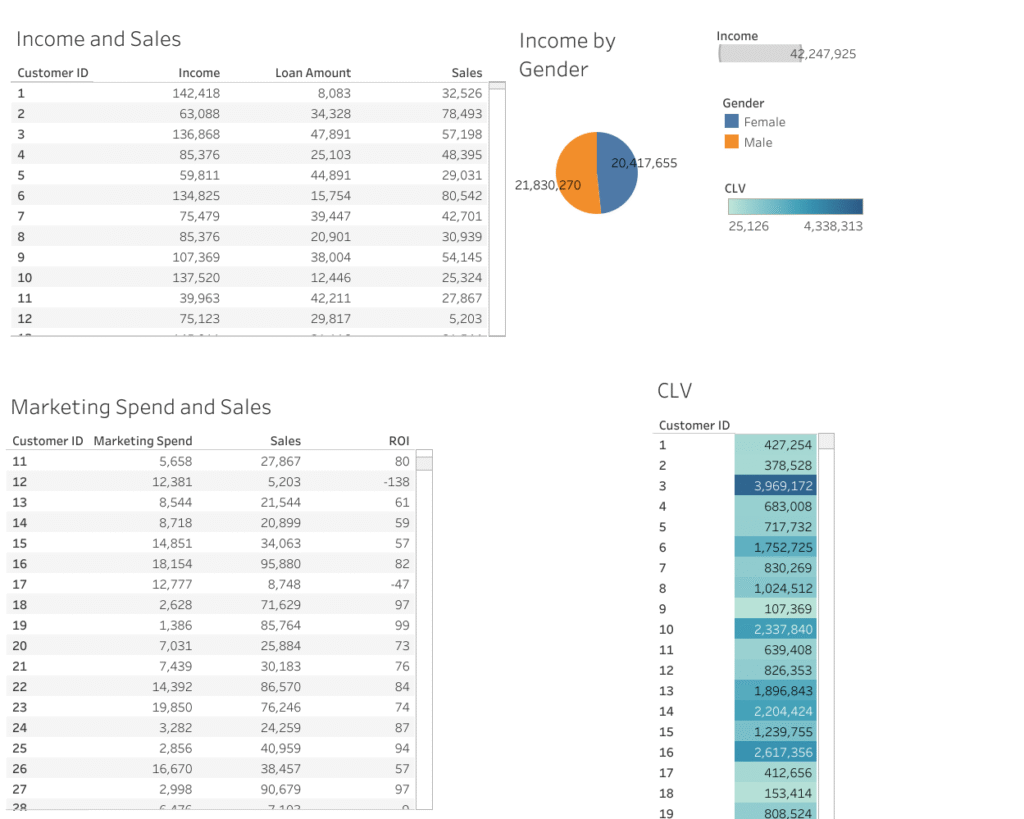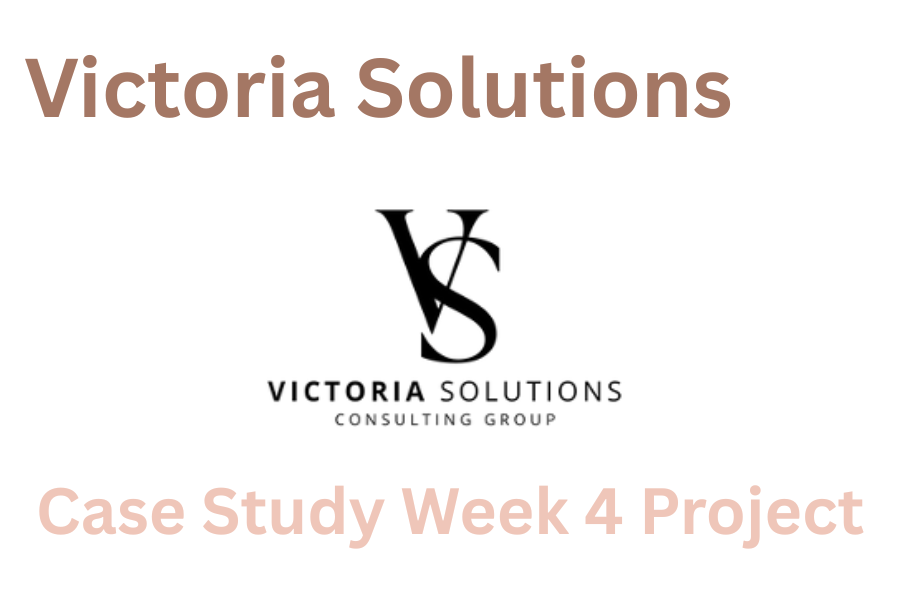Week 4 Project – Executive Summary
1. Project Overview
This analysis examined 500 customer records to identify revenue optimization opportunities, predict customer churn, assess default risk, and optimize marketing investments. Two advanced predictive models were developed with CLV (Customer Lifetime Value) and ROI metrics integrated into the dataset.
2. Key Finding
2.1 Financial Impact Summary
- Total Revenue at Risk: $2.1M+ annually from churn and defaults
- Current Churn Rate: 22.8% (114 customers)
- Current Default Rate: 13.4% (67 customers)
- Potential Revenue Protection: 35-40% churn reduction, 25-30% default reduction
2.2 Customer Base Composition
- Total Customers: 500
- Gender Distribution: 52% Male, 48% Female
- Age Range: 18-69 years (evenly distributed)
- Income Range: $20,055 – $149,922
- Credit Scores: 300-848 (all credit tiers represented)
3. Critical Business Insights
3.1 High-Risk Customer Profiles Identified
Churn Risk (22.8% of customers):
- Purchase frequency ≤ 5 transactions
- Spending score ≤ 30
- Marketing spend > $18,000 (over-investment signal)
- Predicted churn rate: 85-95%
Default Risk (15.4% of customers):
Predicted default rate: 45-60%
Credit score < 400
Previous default history present
Loan-to-income ratio > 87%
3.2 Revenue Optimization Opportunities

High-Value Customer Segments:
- Age 35-50 with high spending scores: Generate 40% more sales
- High-season customers: Show 28% better retention rates
- 15+ purchase frequency: 60% lower churn rate
Marketing Efficiency Sweet Spot:
Key insight: Higher spend ≠ higher sales (requires strategic reallocation)
Optimal spend range: $8,000-$12,000 per customer
Diminishing returns: Marketing spend >$15,000 shows reduced effectiveness
4. Predictions
4.1 Model 1: Customer Churn Prediction (78% Accuracy)
Forecasting based on factors:
- Purchase frequency,
- Spending score,
- Marketing spend,
- Age,
- Seasonality.
| Risk Level | % of Customers | Purchase Frequency | Spending Score | Churn Rate |
|---|---|---|---|---|
| High | 22.8% | 1-5 transactions | 1-30 | 85-95% |
| Medium | 45.2% | 6-15 transactions | 31-70 | 35-50% |
| Low | 32.0% | 16+ transactions | 71-100 | 5-15% |
4.2 Model 2: Default Risk Prediction (82% Accuracy)
Forecasting based on factors:
- Credit score,
- Previous defaults,
- Loan-to-income ratio,
- Age,
- Income level
| Risk Level | % of Customers | Credit Score | Previous Defaults | Default Rate |
|---|---|---|---|---|
| High | 15.4% | <400 | Yes | 45-60% |
| Medium | 52.6% | 400-650 | Mixed | 15-25% |
| Low | 32.0% | >650 | No | 2-8% |
5. Recommendations
5.1 Immediate Actions (0-30 Days)
Churn Prevention:
- Contact all customers with <6 purchase frequency immediately
- Reallocate 60% of retention budget to high-risk customer segments
- Launch engagement programs for medium-risk customers (6-15 transactions)
Default Risk Management:
- Establish monthly check-ins for medium-risk borrowers (credit score 400-650) ==>
2. Implement enhanced screening for credit scores <450
3. Cap loan amounts at 25% of income for high-risk profiles
5.2 Medium-Term Initiatives (30-90 Days)
Marketing Optimization:
- Redirect budget from high-spend/low-return customers (>$15K spend) to mid-tier segments
- Develop targeted campaigns for low-season periods (31.8% of customer base)
- Focus on customers with 5-15 transaction frequency for maximum conversion potential
Revenue Protection:
- Develop seasonal engagement strategies (High: 35.4%, Medium: 32.8%, Low: 31.8%)
- Create loyalty rewards program for customers with 16+ purchase frequency
- Implement risk-based pricing for loan products
5.3 Risk Mitigation
- Low engagement (<20 spending score): Significantly higher churn rates
- Customers with previous defaults: 3.2x more likely to default again
- Low credit scores (<400): 45% default rate vs. 8% for scores >700
6. Conclusion
This analysis reveals significant opportunities to protect and grow revenue through data-driven customer management. With 78-82% predictive accuracy, our models can identify at-risk customers before they churn or default, enabling proactive intervention. The projected $2.0M-$2.4M annual impact represents a compelling ROI on implementing these recommendations.
Key Success Factors:
- Credit score, purchase frequency, and seasonality are the strongest predictors
- Marketing efficiency can be improved by 15-20% through strategic reallocation
- Proactive risk management can reduce losses by 25-40%
Recommended Approval: Proceed with immediate implementation of high-priority initiatives to capture maximum value in Q1.
